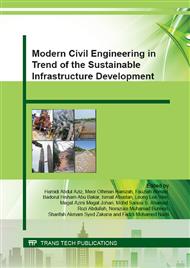p.351
p.357
p.363
p.369
p.375
p.381
p.387
p.393
p.401
Time Gap Evaluation due to the Existence of Heavy Vehicles on Urban Expressways
Abstract:
Time gap is important for road user to make decision relative to the lad vehicle at a roadway segment. Theoretically, if the gap is larger than reaction time, drivers would maintain the safe following distance from the vehicle in front or else the probability of vehicle collusion is considerably high. In expressways, gap is important for the purpose of lane changing and overtaking. Due to high allowable speed on expressways, time gap might be affected, especially with the consideration of heavy vehicle existence. This paper attempts to statistically justify any significance correlation between speed and time gap in relative to critical gap acceptance pertaining to the heavy vehicles and cars interaction on urban expressways. Extensive data was collected through video recording before being abstracted and processed by utilizing the TRAIS software. Then, statistical analysis in relative to the speed and time gap for various vehicles interactions are presented. The results showed there is a significant correlation between speed and time gap for all vehicles interaction. When cars following other cars at allowable average speed, the time gap is relatively low leading to a lower critical gap acceptance as compared to the situation with the existence of heavy vehicles.
Info:
Periodical:
Pages:
375-380
Citation:
Online since:
October 2015
Keywords:
Price:
Сopyright:
© 2015 Trans Tech Publications Ltd. All Rights Reserved
Share:
Citation:


